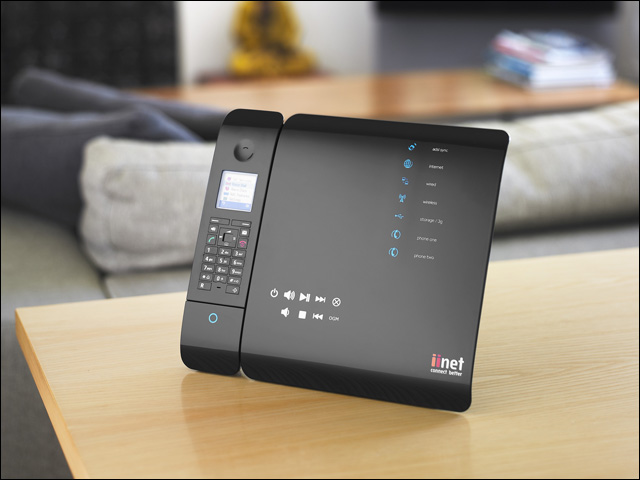news National broadband provider iiNet has introduced changes in its broadband transfer process, making it possible to switch to an iiNet service easily, in a few hours — allowing them to avoid the lengthy downtime associated with churning to a new ISP, which can sometimes extend to several weeks.
In a media release yesterday, iiNet announced that new customers who opted for iiNet’s ADSL2+ or Naked services would be able to transfer across with little or no loss of Internet time — merely a couple of hours.
Churning, i.e., a transfer from an ADSL1 or ADSL2 broadband provider to another with minimal downtime, and transfer fees that ranged from inexpensive to being waived altogether, has historically meant an almost two-week-downtime for some customers. Though service providers take care of all the arrangements, usually, technical barriers prevented a seamless transfer between service providers. Usually during the transfer period the customer had no access to Internet services.
According to Michael Malone, CEO, iiNet, the rapid transfer into iiNet’s ADSL broadband infrastructure was something the ISP had been working on, and that “Technically it is a really clever change to processes, but for customers it will make the world of difference. They’ll now be able to join the iiNet family without the inconveniences that extended periods of downtime can bring.”
Malone was hopeful that iiNet’s strong focus on customer service and satisfaction would contribute significantly to improved service levels across the whole industry. The company was already experiencing the positive impact of the trouble-free transfer process, he asserted, and he expected more people to now opt for the ISP they wanted without the hassle of facing interruptions that the process of switching providers invariably brought about.
iiNet, which supports over 1.7 million broadband, telephony and Internet Protocol TV (IPTV) services nationwide, has commenced new marketing campaigns through TV commercials and online advertising running for six weeks to popularise the new accelerated customer transfer process at reduced downtimes.
Rapid transfer is one advantage which is expected to accrue from the rollout of the predominantly fibre-based National Broadband Network. As most premises in Australia will feature a single standard fibre-optic cable running into their location, backed by new software systems by NBN Co, it is believed that churning to another ISP will be almost instant for customers.
opinion/analysis
This is going to sound tremendously cynical, but I have to say that I’ll believe it when I see it. Historically, much of the delay associated with transferring to a new ADSL broadband provider process in Australia has been due to the complex negotiation process between ISPs and Telstra on access to Telstra’s telephone exchanges, where ISPs often have their own infrastructure. In this sense, I have always had the impression that the delay in churning to a new ISP was more associated with human issues rather than technical issues. Has iiNet been able to successfully tame the Telstra beast? Only time will tell.
Image credit: iiNet. Opinion/analysis by Renai LeMay


An iiNet employee gave a bit of context on whirlpool as to the telstra changes behind iiNet’s change. Looks like Telstra is improving things behind the scenes. :)
http://forums.whirlpool.net.au/forum-replies.cfm?t=1886486#r4
“Two things have changed recently which have allowed these changes:
1) Bigpond have now subscribed to the “Fast transfer program”, which means we can now transfer a Bigpond Service straight onto SSS (iiNet DSLAM port). Previously we could not do this meaning a Bigpond customer would have to disconnect their service to be able to go on to ADSL2+ with iiNet.
2) SSS (ADSL2+) used to be classed as a “complex service” which was incompatible with Naked DSL (ULL). So a customer with SSS with any provider would have to disconnect their ADSL service to be able to upgrade to ULL. Now SSS is no longer classed as a “complex service” it can remain on the line whilst the upgrade to ULL goes through. This means the customer remains online with their current provider until the day of the cutover, at which point they will briefly lose sync. When sync comes back (when cutover is done) they customer simply needs to re-configure their router with the iiNet username/password to be able to connect (or plug in their new BoB Lite or BoB2)”
That actually sounds fantastic.
Renai: maybe I’ll bite the bullet and churn to a naked iiNet service as a case study!
(get off my horribly priced Telstra home phone) and spend the actual money (80 dollars) I am spending on *internet* services, instead of 30 dollars per month on “a piece of copper with services you don’t use” + 50 dollars for the internet you actually wanted.
Atleast then only 10 of my 80 dollars is being directed to the upkeep of copper, instead of 30.
I started with a BOB 1 and it never worked now I have a BOB 2 and it never works either so what is new that works ??????
it is fantastic, i think. as pointed out in the thread linked with that quote (http://forums.whirlpool.net.au/forum-replies.cfm?t=1886486#r10) it is actually not just for iiNet but all isps dealing with SSS from telstra. theres still places one can have downtime but one less is all the better.
yes one would have to see it to believe it. tho if its applying to a swathe of isps at the once we should hear about it from others before too long….?
Comments are closed.